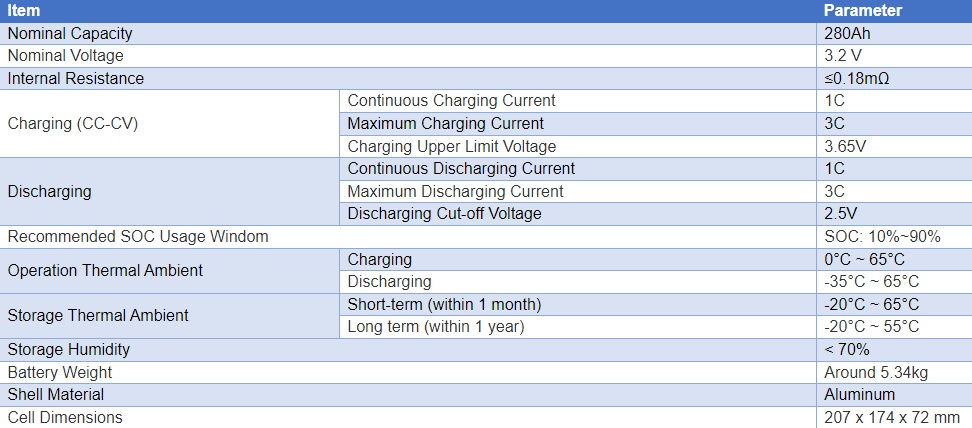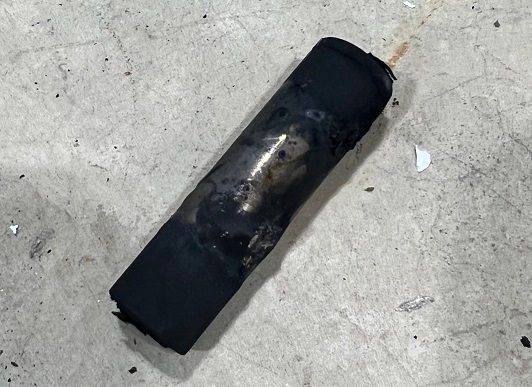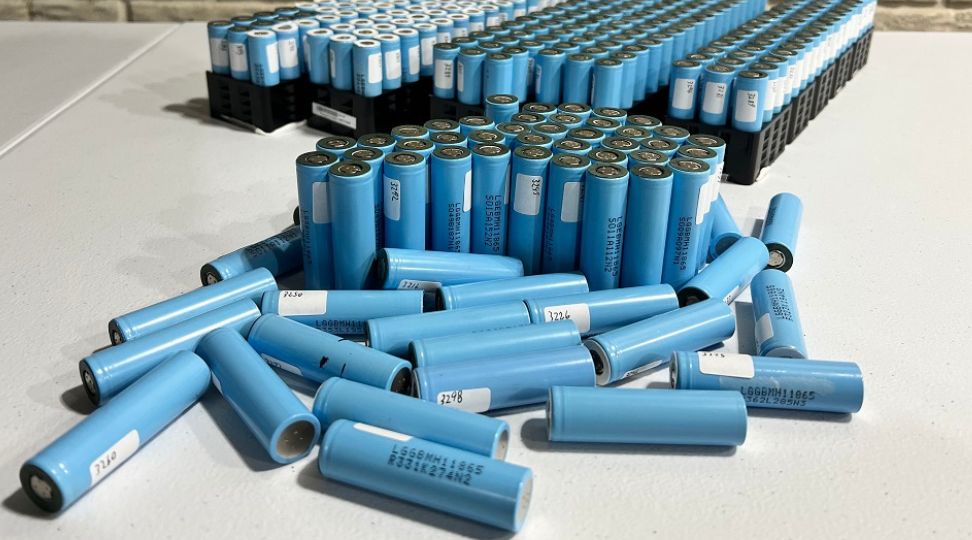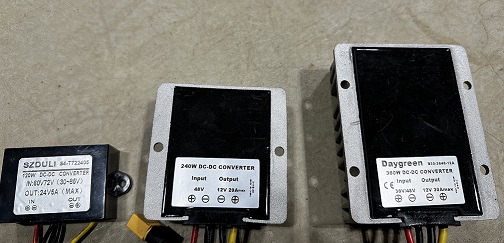
Lithium Ion Battery Safety Tips and Concerns
Table of Contents
- Lithium Battery Safety Rule 1 - If You Are Not Sure - STOP!
- Lithium Battery Safety Rule 2 - Check Your Cell Spec Sheets
- Lithium Battery Safety Rule 3 - Ask, Learn, And Discuss
- Lithium Battery Safety Rule 4 - Take Your Time
- Lithium Battery Safety Rule 5 - Keep Your Eyes On Your Projects
- Lithium Battery Safety Rule 6 - Know What To Worry About
- Lithium Battery Safety Rule 7 - Test Your Cells And Equipment
- Lithium Battery Safety Rule 8 - Properly Dispose Of Your Cells
- Lithium Battery Safety Rule 9 - Start Small
- Lithium Battery Safety Rule 10 - Test Your Build
- What Is Thermal Runaway?
- Are Lithium-Ion Cells Really That Dangerous?
- Battery Chemistries Role in Lithium Safety
- Lithium-Ion Safety Mechanisms
When used properly, lithium-ion batteries are a safe, high-density power source for electronic devices, vehicles, and more. When not used properly or when poorly designed or improperly implemented, however. lithium-ion batteries can be dangerous or even life-threatening.
So, if you plan on building a lithium-ion battery pack, it's important to have a basic understanding of how batteries work and a healthy respect for the dangers associated with lithium-ion batteries.
The most important things you can do to practice good lithium-ion battery safety is not make assumptions about what you are working with, check your cell spec sheets, take your time when building your battery, ask questions when you are confused, and use the online battery communities as a resource, build a small battery pack first, don’t let your projects out of your sight and as always, properly dispose of your lithium-ion battery cells.
In this article, we will go over the most important aspects regarding lithium-ion battery safety. We will cover the do’s and don’ts, and we will provide guidance on how to keep your battery packs as safe as possible.
Lithium Battery Safety Rule 1 - If You Are Not Sure - STOP!
There is no room for guessing when dealing with lithium-ion batteries. So, if you are not 100% certain what your cells are capable of, then stop! Guessing can result in a fire, property damage, and loss of life.
Remember, lithium-ion batteries are capable of delivering much higher currents than conventional alkaline batteries. This is because lithium-ion batteries have a far lower ISR (Internal Resistance) than conventional AA, AAA, C, and D battery cells.
Lithium Battery Safety Rule 2 - Check Your Cell Spec Sheets
Each type of lithium-ion cell has its own ratings and limits. These limits should never be exceeded! Some of these limits, such as maximum charge voltage, are obvious and universal for all lithium-ion cells. There are other ratings, however, that vary from cell to cell and you need to know them.
Consider this example: You have two types of cells. One of them can handle 10 amps of current and the other can only handle 6. If you are using those cells to power a device that takes 9 amps, one of those cells will perform very well. As for the other cell, its ability to provide current is underrated which will cause the cell to get how, and this could lead to a failure in time.
The worst part is that if you are running a cell above its maximum current, it can take quite a bit of time before things start to heat up on the outside. By then, it's often too late. This is why it’s important to always know what your cells are capable of before you use them.
Lithium Battery Safety Rule 3 - Ask, Learn, And Discuss
The internet is an excellent source of free information. Check Facebook and Discord for battery communities. There are literally hundreds of thousands of people willing to help you right now and for free. You can even join our Facebook Group and get help and guidance from people in real time!
There are also plenty of forums and other communities that are not on traditional social media. A quick Google search for ‘electronics community’ or ‘battery building forum’ will turn up some useful results. The DIY Solar Forum, Endless Sphere’s forum, and Second Life Storage are three that I highly recommend.
So, get out there and be a part of the community. Don't be afraid to ask questions. Who knows, maybe one day after you learn more about the field, you could help someone else.
Lithium Battery Safety Rule 4 - Take Your Time
Don't be in a rush! Remember, no one is making you build this battery and it's definitely not a race. So, take your time and plan well when approaching these things, they are dangerous!
It's very helpful to use some of the tools we've built to help you in the process. Our battery pack calculator is a great resource to virtually build your pack before you start your actual build.
You know the old saying, 'measure twice cut once'. Check, double-check, and triple-check your wiring, fuses, connections, and welds.
Lithium Battery Safety Rule 5 - Keep Your Eyes On Your Projects
While you are still becoming familiar with electronics and batteries, it's easy to make simple mistakes. The problem is, that those simple mistakes can cause big, hot fires. So, until you get a handle on things, make sure to not charge or discharge your battery projects unless they are within eyeshot.
If you can't keep a project within eyeshot safely storing your lithium pack until you can is an easy way to keep things safe.
This may sound inconvenient but it’s very important when you are just starting to learn. After some amount of time, you will be able to leave your projects unattended, but for now, it’s best to keep an eye on them.
Lithium Battery Safety Rule 6 - Know What To Worry About
When it comes to working with batteries, there are some things that you have to worry about, but there are other things that you shouldn't. In fact, When it comes to battery safety, the most important factors are the maximum current draw, maximum battery pack temperature, and maximum cell charge voltage. The most common thing we battery builders run into is shorting something, make sure wires don't cross and you don't drop anything metal.
Lithium Battery Safety Rule 7 - Test Your Cells And Equipment
Don't just assume everything is working. Components, fixtures, connections, and test equipment will all eventually fail and they will fail at different rates. So, make sure to regularly check your equipment to make sure everything is functioning as it should.
You also need to test your cells, you can also test your battery after it's built but before you use it. Don't get in the habit of trusting a particular source. No matter how good the cells are, always check each and every one of them.
Lithium Battery Safety Rule 8 - Properly Dispose Of Your Cells
Discharge cells and batteries fully and bring them to a battery recycling bin. Battery recycling bins can often be found at hardware stores.
You can't just throw away battery cells! They contain hazardous chemicals that should not be dumped into a landfill. Also, if the battery terminals touch against something metal and form a circuit it could cause a fire that you would ultimately be responsible for.
This could easily happen as you have no way of knowing where your trash is going to end up and what it will be placed next to. It’s also important to consider that most trash gets mechanically compacted at some point along the journey. If there are charged lithium-ion cells in there when that happens, there is a high chance of a fire.
Lithium Battery Safety Rule 9 - Start Small
Don't try to build a massive battery for your very first project. In large batteries, there are many more connections and individual components to deal with. So, it's best for a newcomer to start small and go from there.
We recommend building a small battery to get acquainted with the principles and to learn what not to do on a small scale, avoiding a larger more costly incident if there is one. Learning to build a power bank is a great first project, it requires very little experience but you will gain lots of knowledge quickly. If you are just starting out with learning to build batteries, then we recommend that you check out Omnicell kits.
Omnicell kits make it easy to put together small battery backs without having to spot weld or own any other kind of special equipment. When using the Omnicell system, the cells are not welded to the conductor.
This makes it easy to add or remove cells later for upgrades and troubleshooting purposes.
Lithium Battery Safety Rule 10 - Test Your Build
We recommend building a 3S2P battery when you are just starting out. 3S because it will result in a battery that has a commonly usable voltage, and 2P so you can get some experience making parallel groups and connecting them in series.
Using commonly available 3000mAh cells, a 3S2P battery would be able to provide around 66Wh of energy. There are commonly available battery testers that are used to verify capacity.
There are commonly available low-cost battery testing devices that can measure how much energy is stored in a given battery. If your first battery doesn’t have at least 90% of its rated capacity, then something is wrong with either the cells you used or how you put them together. It could even be something as simple as a single poor solder connection.
What Is Thermal Runaway?
Thermal runaway is just as bad as it sounds. When a thermal runaway occurs, the heat from a single failing cell can quickly propagate to the next cell, causing a dangerous cascading chain reaction.
When even just a small part of a lithium-ion cell reaches a certain critical temperature, the chemical components of the cell will begin to physically break down. The reactions that occur as a result of these substances breaking down are exothermic. This means it generates heat.
One of the worst parts is the decomposition rate increases exponentially as the temperature rises. As temperature increases, decomposition increases, which increases the exothermic reactions, which produce more heat. The result is a positive feedback loop that can lead to a massive fire.
Are Lithium-Ion Cells Really That Dangerous?
After all the warnings, lithium-ion batteries can seem kinda scary. It’s important to remember, however, that when designed and used properly, lithium-ion batteries are safe. In fact, heat-related failures of lithium-ion batteries are actually pretty rare considering how many are manufactured each year.
In our experience most battery-related incidents are a result of human error. Poor planning and building of a battery pack is the main culprit to incidents occurring.
Battery Chemistries Role in Lithium Safety
While there are many different types of lithium-ion cells, they all filter down to two basic types: cobalt and manganese. Cell phones, digital cameras, and laptops use cobalt-based lithium-ion because it offers the longest runtimes.
Power tools and medical devices tend to use manganese because it offers much better thermal stability as it can sustain temperatures of up to 250°C before becoming unstable. Also, manganese has an extremely low internal resistance, so it's able to deliver high current on demand.
Manganese batteries are not perfect, though. Manganese batteries offer a lower energy density than cobalt-based cells. Generally speaking, cells with manganese cathodes provide about half the capacity of cobalt-based cells of equal size.
For these reasons, lithium-ion battery manufacturers mix the metals in various ratios.
Lithium-Ion Safety Mechanisms
There are several protection devices built into each lithium-ion cell. These built-in protection devices don’t make lithium-ion batteries safe, they only make them safer. One of the devices inhibits high current surges by using a CID circuit interrupt device that breaks the electrical circuit if the cell's pressure reaches 150 psi. This allows the high-pressure gasses to be vented, which prevents an explosion.
In addition to the mechanical safeguards built into the cells, the BMS provides electronic safety features that actually make lithium-ion batteries relatively safe. If the voltage of any cell goes over 4.2V, the BMS control logic effectively disconnects the battery pack from the circuit.
The BMS will also disconnect the circuit if the load current reaches an unsafe threshold. These two features alone can prevent most failures from turning into catastrophic events. The BMS protects the battery from damage by disconnecting the load from the battery pack once its in this state you will need to wake the BMS in order for it to function again.
There are many non-branded replacement batteries that are popular with cell phone users and repair shops because of their low prices. The problem with a lot of these batteries is that they are not manufactured with the same safety standard as the mainstream brands.
Considering the sheer number of lithium-ion batteries that are produced, sold, and shipped every year, they have caused very little harm.
Conclusion
As long as lithium-ion batteries are used properly and proper care and respect are given to them, lithium-ion batteries are a safe and reliable power source for our modern world.
When it comes to lithium-ion battery safety, it's important to verify cell spec sheets and take your time when building your battery. Also, don’t be afraid to ask questions, and take an active part in the battery communities. Make sure to not attempt to build a massive battery on your first try, keep an eye on your projects, and don’t make assumptions about your cells or test equipment.
We understand that all the terms and procedures can be a bit overwhelming to keep track of. That’s why we made a suite of tools to help people build safe, high-quality lithium-ion battery packs.
Pack Builder helps you build a properly balanced battery pack based on the capacity and IR (internal resistance) of each cell. Pack Planner will help you to figure out what size battery pack you need to build for a given application. Our BMS Planner tool will help pick the proper BMS for your project.
We are always adding more tools to make building battery packs better. Check in regularly or subscribe to our newsletter to stay up to date!
We hope this article helped you learn more about lithium-ion battery safety. Thanks for reading!






